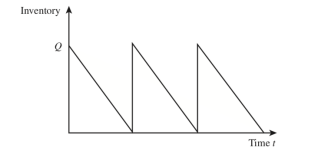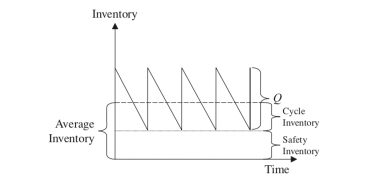As we were studying logistics and supply chain, something occurred to me: why couldn’t we simply order a lot so that we have enough inventory for a long period of time? Otherwise, why couldn’t we order the exact quantity to match the customer demand? Well, reading through logistics article, I found my answer! A company cannot afford to order a huge quantity of product as the holding costs (cost of keeping the product in the company inventory) will be extremely high. At the same time, a company cannot afford to have low or no inventory as the demand can have a high variability and a lack of storage can lead to loss of sales and loss of customers.
Inventory depends on several things:
– Demand(which has a certain degree of uncertainty)
– Leadtime(which is the gap between when an order is placed and when the merchandise actually arrives)
– Holding costs (cost of keeping the inventory in house)
– Order costs(fixed costs incurred each time an order is placed)
– Discounts (depending on the quantity purchased, the supplier can offer discounts which need to be taken into account)
– Product price
The term Cycle Inventoryis used to define the average inventory in a supply chain due to either production or purchases in lot sizes that are larger than those demanded by the customer. It follows the following formula:

A lot size (or batch size): Q: is the quantity that a stage of supply chain either produces or purchases at a specific time.

A typical example of lot size is shown with this graph: Q (lot size) is the quantity order at a time t. In this case, the demand is kept constant, which mean that we forget about the variability of demand. If we want to take the variability of demand into account, a company can add a “safety inventory”:

In order for the company to understand which quantity they can order so that they can minimize the total costs, several models exist. One of which is the EOQ: Economic Order Quantity, which is the optimal lot size. This quantity can be found using this formula:

With: D: Demand; S: Setup Costs; h: Holding Costs; C: Cost per unit of product
There are many other models used to calculate the quantity required in order to minimize the total cost, or maximize the efficiency such as: Production Lot Sizing, Lot Sizing with capacity constraint, Lot Sizing with multiple products or customers,…
I hope that you now understand a little bit better the key concepts of Cycle Inventory. If you want to learn more about this, you can read through Chopra’s book (which is part of our class material): Supply Chain Management: Strategy, Planning and Operation.
